Introduction

A question has been haunting our minds since the launch of the new 2021 Royal Enfield Classic 350: Which is the better Royal Enfield - the new Classic 350 or the Meteor 350?
After all, if existing Classic 350 owners are looking to replace their current motorcycles - and that’s going to be a handsome chunk soon - should they buy the Classic again, or try something different with the Meteor? Moreover, there’s a whole bunch of 125, 150 and 200cc commuter motorcycle users who are looking to move up the capacity ladder to experience that big bike feel Royal Enfields so clearly promised. Now, which of the two would suit them better?
To answer the two sides of this question, we have split the story into two broad parts - commuting and longer highway jaunts. But, before we get there, here’s a quick introduction to the two motorcycles.
The Protagonists

The Meteor and the Classic are more similar than their exteriors let on. Both are based on Royal Enfield’s new J platform. And that means both the motorcycles get the exact same engine and gearbox.
The engine is a 349cc, single-cylinder air / oil-cooled unit that’s mated to a five-speed gearbox. The engine is smooth, and there’s a likeable baritone and refinement to the exhaust note of both motorcycles. The gearbox meanwhile is slick, precise, and light to use. The output figures of the engine are exactly the same on the Classic and the Meteor, but between the two, the Meteor is quicker and more alive; then be it outright acceleration or riding the torque through the gears.

Now even in terms of suspension, chassis and hard points, the two bikes use the same hardware. There’s a hint of difference in the tuning, yes, but the bigger difference is in terms of weight and wheel sizes. The Classic is the heavier of the two, and it also uses a 19-inch front and an 18-inch rear wheel setup compared to a 19-17 front to rear layout on the Meteor. The latter also runs a meatier 140 section rear tyre compared to the 120 on the Classic 350.
The Commuter

Now when it comes to commuting, a few things are a given - ease of parking, good slow speed agility, unrestricted paddling in traffic, good visibility via the rearview mirrors, comfy seat, good brakes, and of course, a decent fuel efficiency. The difference between a good and a not-so-good commuter is how far apart the two are in delivering these, and to what degree.
The Classic 350 is the heavier of the two bikes, and it is more cumbersome to park. It’s not as easy to push around as the Meteor, and it’s also more difficult to put on the centre stand. What’s more, the Meteor is friendlier even when it comes to paddling in traffic or just pushing the bike when seated.

Courtesy of its lower seat height and the forward set footpegs, one has better leverage to push, and nothing hits your shins when the bike moves but your feet remain planted. On the Classic, you better watch out for your shins.
Next up, seating ergos. The Classic 350 has a higher seat height. It has neutrally set footpegs, and one has to reach for the handlebar. All of this means the rider sits ‘on’ the bike pressing down on the handlebar constantly. The Meteor has a wider handlebar that reaches out to the rider. One also sits ‘in’ the bike thanks to the lower seat and forward-set footpegs.

We also found the Meteor‘s rider’s seat to be more comfortable; be it on the highway or for shorter rides in the city. It’s better contoured, it’s plusher, and somehow feels more supportive even over longer distances. The pillion seat though is better on the Classic. It has better cushioning, it is wider and longer, and there’s no backrest to rub against your back to cause itching courtesy vibrations.
The difference between the seating triangles of the Classic and the Meteor is clearly a typical street bike vs cruiser one. But, here’s the surprising part - even with the more relaxed seating, it’s the Meteor that feels lighter and more responsive to inputs at slow riding speeds and when filtering through traffic.

It makes quick direction changes in a more linear, predictable, and fluid manner compared to the Classic. It’s probably as much about feel as the handling dynamics here, and on that front, the Meteor is clearly better.
The Meteor then gets our vote as the better commuter.
Highway Star

Now when it comes to riding long distances, parking isn’t as important as say, a good cruising speed. Seating ergos and a comfy seat and good brakes and decent fuel efficiency still remain important, of course. But now, wind buffeting and vibrations and ride quality have become even more important.
The Meteor, especially in this top-spec trim has better wind protection courtesy of its tall windshield. And we have already established earlier that even in terms of seating the Meteor trumps the Classic; long-distance or otherwise.
Now, the optimal cruising speed for both the motorcycles here is around 80-90kmph. You can ride them faster, but in terms of feel and the lack of vibrations and having some grunt in reserve, 80-90 is what we would settle for. At these speeds, the two are very similar. But, because the Meteor has peppier performance it makes the Classic feel more laborious; then be it overtaking or accelerating back to this cruising speed after a speed breaker or a section of broken road or a break in the divider.

I also felt the Classic vibrated more at these speeds, but the difference was minimal. As far as braking, fuel efficiency, and range are concerned, the two again are pretty similar. In dynamic terms, again the Classic seems to trail the Meteor. The Meteor is more eager to lean into bends, it’s more fluid in transitions, and because it offers more feel and it reacts just the way you want it to, it’s easier to push the Meteor harder around corners than the Classic.
The Classic isn’t bad. But, it’s not a motorcycle you look forward to taking up a switchback. It will do the left-to-right and right-to-left dance competently. But, it always feels more formal and forced. On the Meteor, it’s more of a happy and cheerful one.
So again, even as a highway star, it’s the Meteor that gets our vote.
The Better RE

So, which is the better Royal Enfield? If it wasn’t obvious already - the Meteor.
But, of course, if you are looking to replace your Classic 350 with a similar experience because you clearly enjoyed it, then the Meteor might not feel substantial or worthy enough. It doesn’t have the same rawness or rough-around-the-edges feel of the Classic. It’s a little too polished or mainstream for traditional Classic buyers. The new Classic is of course much better than the bike it replaces, but, it still has that old motorcycle’s soul, so to speak.

The Meteor has a soul too. But it’s more in vogue than one that’s set in the past. And so it makes for a wonderful option for upgraders moving from the 125, 150, and 200cc world. The Meteor also comes across as a no-compromise motorcycle. A motorcycle that wasn’t throttled or toned down to fit older sensibilities. It comes across as the best that the Royal Enfield engineers could do with the J platform then be it in terms of performance, handling, feel, or even design and ergo. That, however, is missing on the Classic.
Photos by Kaustubh Gandhi

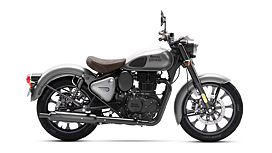

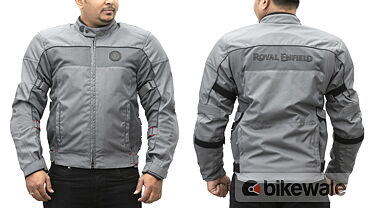
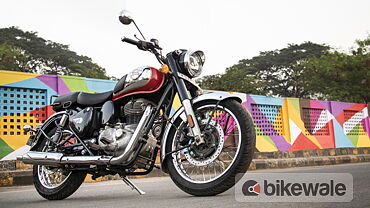


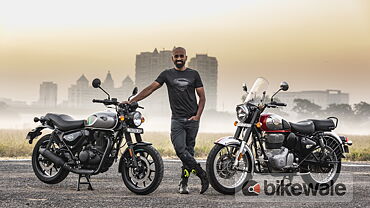
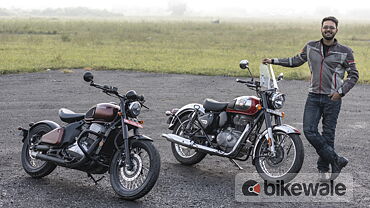























![KTM 390 Adventure X [2025] KTM 390 Adventure X [2025]](https://imgd.aeplcdn.com/272x153/n/cw/ec/190885/390-adventure-x-2025-right-side-view.jpeg?isig=0&q=80)